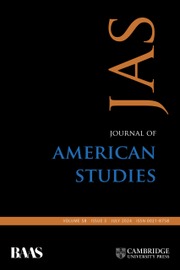Jason Sharples's thought-provoking new book explores slave plots in the British colonies in the seventeenth and eighteenth centuries. It was, he claims, a “World That Fear Made,” alluding to the titles of Eugene Genovese's The World the Slaveholders Made (1969) and Roll, Jordan, Roll: The World the Slaves Made (1974). British colonial elites lived with the constant fear of enslaved uprisings, while enslaved people endured the terror caused by white anxiety. Sometimes that anxiety spilled over into outright frenzy with judicial murders of enslaved people intended to send a message to the wider population about who held power.
Sharples continues a welcome trend in the historiography of early America by treating the British colonies in North America and the West Indies as part of a larger whole. There are case studies from all over British America, with particular attention being paid to the conspiracies in Antigua in 1736 and New York in 1741. There is a lot of sense in this approach, since news circulated around the anglophone world particularly effectively and fostered, in Sharples's phrase “a common white culture of fear” (97). This culture of fear created a template for white anxiety about slave conspiracies that drew on older English fears about Catholic plots in the sixteenth and seventeenth centuries. According to surviving reports, testimonies and confessions, plots by enslaved people – whether in the West Indies, the southern plantation colonies or New York – followed a remarkably similar pattern: arson to distract and befuddle the general populace, followed by a general slaughter of white men, with white women preserved for sexual gratification. In nearly every case outside agitators were suspected of being involved.
Sharples argues that most, perhaps all, of these plots say much more about the anxieties of white men than they do about the scheming of the enslaved. White men were, in essence, projecting concerns about “their own security weaknesses” (38) onto the enslaved. Plots were a reflection of what whites might do if they were placed in a similar situation, and the envisaged violence was therefore justified because of the violence meted out on a daily basis to the enslaved. The plots that whites “discovered” were thus, at least in part, a recognition that the harsh treatment of the enslaved could be expected to cause such a response.
Sharples attributes the remarkable degree of homogeneity among plots to the way in which they were investigated. The accused soon learned that one of the few possible ways to save their own lives was a confession, and the more detailed and realistic the better. The leading questions asked by investigators elicited exactly the responses they were seeking. The torture used to elicit such confessions played a leading role in allowing plots to grow almost exponentially, while the brutal and drawn-out executions of plotters only served to terrify those still under investigation to come up with information that might satisfy the courts. Whites had created a feedback loop, whereby whites terrified by the prospect of a bloody insurrection used terror tactics on the enslaved population to confirm their own worst nightmares.
Something that Sharples might have addressed in greater depth is the increasing willingness of whites in the West Indies to arm some of the enslaved in the face of external threats. Given their obvious terror during times of war, it seems contradictory that white Jamaicans created their “Black Shot” units at the same time.
One might take from this book that the enslaved never plotted, and were always the victim, but there were also some plots (perhaps best identified by preemptive voluntary confessions to unsuspecting whites) that then were blown out of all proportion by the ensuing investigation, ensnaring many innocent individuals. In a telling early observation, Sharples notes that actual slave revolts often bore little resemblance to the highly structured plots that whites fabricated in their heads.
This is undoubtedly an intelligently argued and well-researched book that shows clearly that the enslaved were much more likely to be victims of conspiracies rather than conspirators. It can be recommended for anyone interested in the slave societies of the anglophone world.



